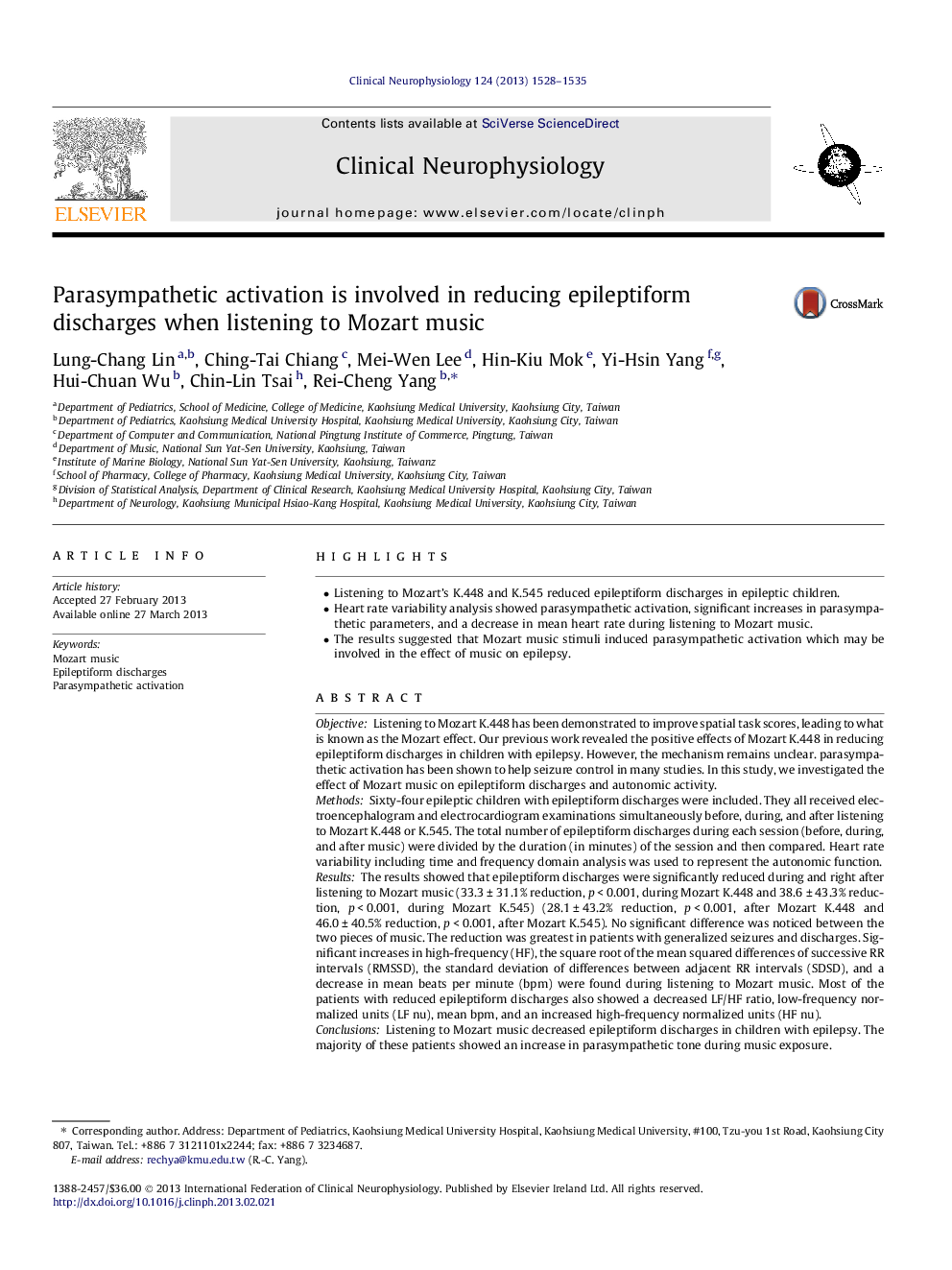| Article ID | Journal | Published Year | Pages | File Type |
|---|---|---|---|---|
| 3045177 | Clinical Neurophysiology | 2013 | 8 Pages |
•Listening to Mozart’s K.448 and K.545 reduced epileptiform discharges in epileptic children.•Heart rate variability analysis showed parasympathetic activation, significant increases in parasympathetic parameters, and a decrease in mean heart rate during listening to Mozart music.•The results suggested that Mozart music stimuli induced parasympathetic activation which may be involved in the effect of music on epilepsy.
ObjectiveListening to Mozart K.448 has been demonstrated to improve spatial task scores, leading to what is known as the Mozart effect. Our previous work revealed the positive effects of Mozart K.448 in reducing epileptiform discharges in children with epilepsy. However, the mechanism remains unclear. parasympathetic activation has been shown to help seizure control in many studies. In this study, we investigated the effect of Mozart music on epileptiform discharges and autonomic activity.MethodsSixty-four epileptic children with epileptiform discharges were included. They all received electroencephalogram and electrocardiogram examinations simultaneously before, during, and after listening to Mozart K.448 or K.545. The total number of epileptiform discharges during each session (before, during, and after music) were divided by the duration (in minutes) of the session and then compared. Heart rate variability including time and frequency domain analysis was used to represent the autonomic function.ResultsThe results showed that epileptiform discharges were significantly reduced during and right after listening to Mozart music (33.3 ± 31.1% reduction, p < 0.001, during Mozart K.448 and 38.6 ± 43.3% reduction, p < 0.001, during Mozart K.545) (28.1 ± 43.2% reduction, p < 0.001, after Mozart K.448 and 46.0 ± 40.5% reduction, p < 0.001, after Mozart K.545). No significant difference was noticed between the two pieces of music. The reduction was greatest in patients with generalized seizures and discharges. Significant increases in high-frequency (HF), the square root of the mean squared differences of successive RR intervals (RMSSD), the standard deviation of differences between adjacent RR intervals (SDSD), and a decrease in mean beats per minute (bpm) were found during listening to Mozart music. Most of the patients with reduced epileptiform discharges also showed a decreased LF/HF ratio, low-frequency normalized units (LF nu), mean bpm, and an increased high-frequency normalized units (HF nu).ConclusionsListening to Mozart music decreased epileptiform discharges in children with epilepsy. The majority of these patients showed an increase in parasympathetic tone during music exposure.SignificanceOur results suggested that Mozart music stimuli induced parasympathetic activation which may be involved in the effect of music in reducing epileptiform discharges and the recurrence rate of seizures.
